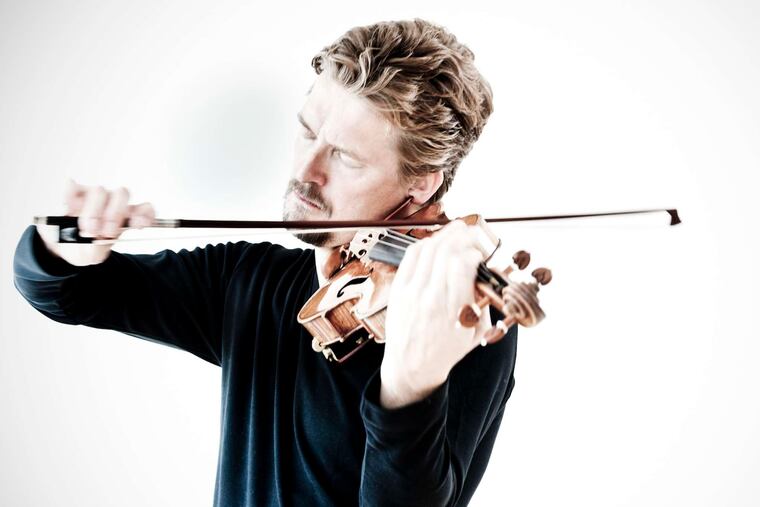Christian Tetzlaff and Lars Vogt show finesse at the Kimmel, and an acrobat’s flair
You had to wait for the encore, though, for a sense of why these two are considered among the first rank of soloists worldwide.

The Beethoven was routine. Their Shostakovich wonderfully, off-the-charts intense. And the brief Brahms was a revelation that ended up being oddly indispensable to understanding who the performers were — oddly since, as an encore, its presence wasn’t guaranteed from the start.
One of the things you hope a recital will do is provide a complete portrait of the artist, and Tuesday night’s performance at the Perelman Theater by violinist Christian Tetzlaff and pianist Lars Vogt did that, but only by the skin of its teeth. Had my impressions of the pair depended on the opening piece, Beethoven’s Violin Sonata in A Major, Op. 30, No. 1, I might have wondered why these two are considered among the first rank of soloists worldwide.
Why, too, would the Philadelphia Chamber Music Society have put its respected imprimatur on them? But Shostakovich’s Violin Sonata, Op. 134 answered. It sounded like it was composed for the pair.
The composer’s stock-in-trade dread and utter despair are abundant here, but with an added edge of near-hysteria. Tetzlaff realized all of these qualities by altering his tone to astonishing extremes: dry and sardonic, saturated, and, in an amazing show of finesse, the fast weaving of a particularly spidery texture in the first movement. It was hard to hear the piano part as anything but beautifully orchestral in the hands of Vogt.
Tetzlaff’s physicality is part of his appeal. When he turned a page while continuing to play — his right hand bowing a repeated note on an open string, left hand reaching to turn the page, chin firmly pressed on instrument — it was with an acrobat’s flair.
The players made Kurtag an introduction to Franck, starting the latter’s Violin Sonata in A Major while the sounds of the former’s brief, punchy Tre Pezzi, Op. 14e were still ringing in the ear.
Like the Beethoven, the Franck was, of course, technically impressive. But it wasn’t strongly felt. It didn’t offer any revelations about the piece or the performers. This was made retrospectively all the more obvious when the encore from Brahms’ Violin Sonata No. 3, the third movement, had so much to say. It was warm, human, expressive, and full of original insight.
As for that Beethoven, it’s not that there was much wrong with it. But here’s a work with a history of strong personal interpretations, and Tetzlaff and Vogt somehow managed in various places to be bland or pretentious. The nearly-too-quiet-to-hear treatment of certain passages proved that just because you can do something is no reason you should. Shostakovich is hard to play. Beethoven is harder.